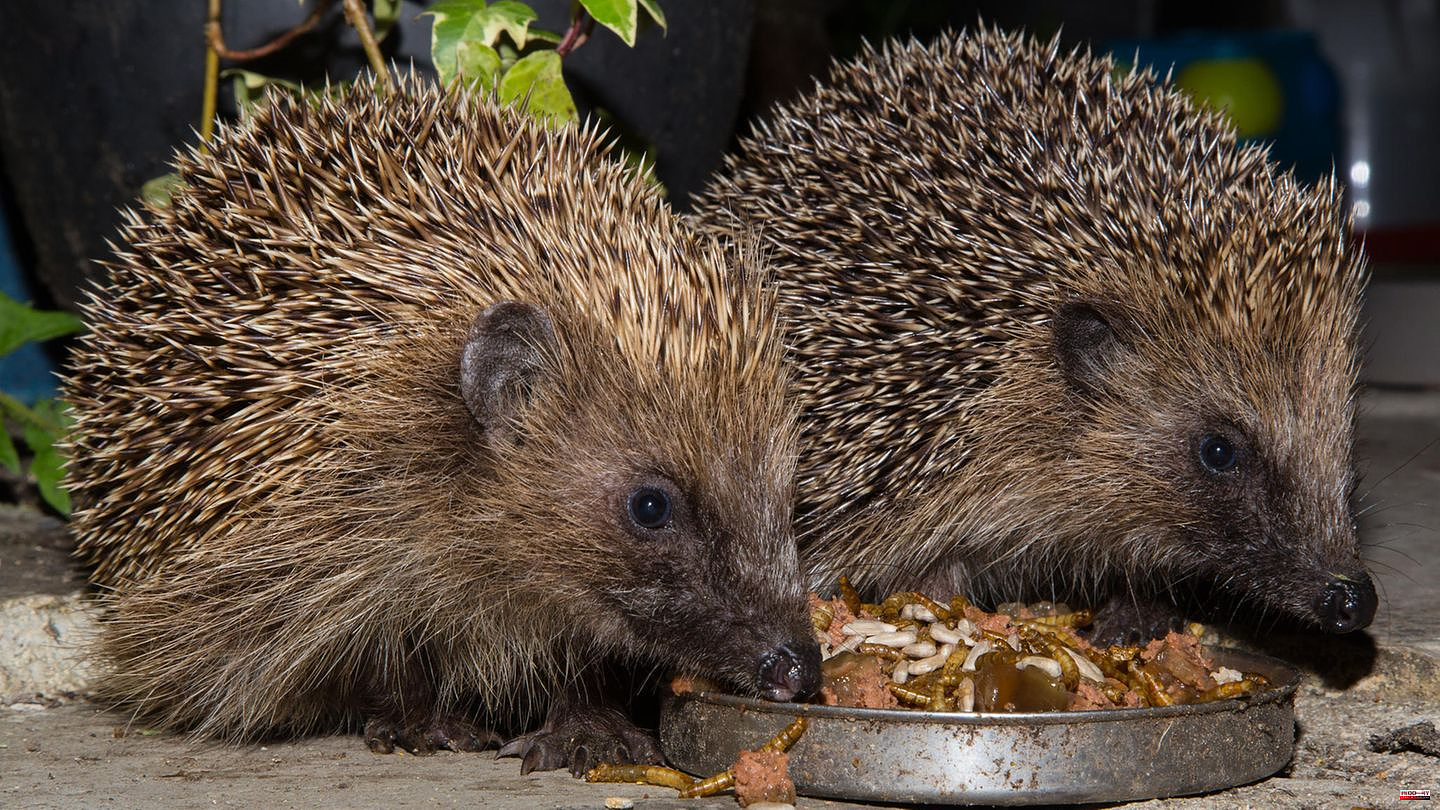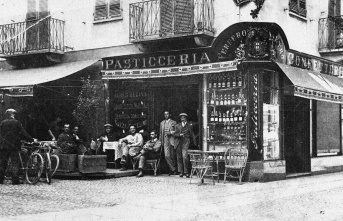Hedgehogs search for food all year round - unless they are hibernating. While the animals have no trouble finding enough food during the warm months, young, orphaned, injured or sick hedgehogs in particular have too little winter fat on their ribs in autumn. The same applies to weakened mother hedgehogs who have not (yet) been able to eat enough to survive the cold season unscathed by raising their offspring. The nocturnal wild animals primarily eat insects, but you can also strengthen them with special hedgehog food. Which ingredients are suitable for this and which are not, is explained in this article.
Just because you have observed a hedgehog several times foraging in your garden does not mean that you have to interfere with the diet. On the contrary: If the animal is healthy and active, you can harm it by feeding it hedgehog food. Nevertheless, it can of course happen that a loner needs your help - for example because he is ill, injured or weak. The most common triggers that should encourage you to trade and feed are the following scenarios:
If one of the cases mentioned occurs, it is perfectly permissible to feed hedgehogs. However, you should keep in mind that the animals are protected under the Federal Nature Conservation Act and may not be caught. For this reason, you should better lay out the hedgehog food outdoors. What you need to consider is explained in the next paragraph.
Typically, between October and November, hedgehogs start preparing for hibernation by munching on a decent amount of flab. Depending on when and how quickly the temperatures drop, weight gain can start earlier. The wild animals feed mainly on insects (e.g. beetles, butterfly larvae, earthworms, beetle larvae, earwigs). Nuts, fresh vegetables and fruit, on the other hand, are not on their menu - quite the opposite: hedgehogs cannot digest these foods very well, but will eat them anyway in an extreme emergency (i.e. if they are hungry for a long time).
So if you want to buy ready-made hedgehog feed to support a hungry animal, you always have to pay attention to the composition. Dried fruits and vegetables should be minimal in the premix, instead meat, insects, and egg products are some of the best ingredients to feed a hedgehog. There is both special wet food and dry food for hedgehogs (e.g. 500 grams, 800 grams or 1000 grams). You can also mix the latter with some cat food (including a high meat content) and wheat bran. Other foods that are suitable for wildlife include hard-boiled eggs, dog food, and ground beef (cooked).
As already mentioned, foods that are difficult to digest, such as fresh fruit and vegetables, are not suitable as hedgehog food. But raisins, cakes, rice and pasta or bread should not end up in the animals' feeding bowl either. The same applies to baby food and porridge for small children. However, the worst thing you can give a hedgehog is milk! Regardless of whether it is pure or in other products such as yoghurt - the animals have a lactose intolerance, i.e. they cannot digest the milk sugar it contains. Not only do they get diarrhea, they can even die from it. If you want to offer a hedgehog something to drink, water is the only and right choice.
If you want to feed a hedgehog, the amount of food should depend on two factors: the animal's weight and its state of health. To find out how light the weakened animal is, you can weigh it using a towel and a kitchen scale (outside please). According to PETA, the guideline here is: young hedgehogs should weigh between 500 and 700 grams, adult animals up to 1000 grams. If the measured value is significantly lower, you can feed the hedgehog once a day in the evening - but only as much as fits into a cup (i.e. a maximum of 150 grams). Weigh the animal regularly, ideally it should initially gain 15 to 20 grams a day from the hedgehog food. With weight gain, 10 to 15 grams is enough.
The hedgehog food not only attracts the small wild animals, but also other animals such as rats and cats or even foxes. For this reason you should not place the feeding bowl unprotected in the garden, but build a kind of feeding box. To do this, take a small cardboard box without a bottom, cut a small hole in it for the hedgehog and weigh it down with a stone. Since the animals often defecate where they eat, it must be collected regularly. It is also important to clean the feeding bowl thoroughly every day and to dispose of the leftover food. Because even hedgehogs are clean.
Those: PETA
This article contains so-called affiliate links. There is more information here.












